
The Polizia di Stato is one of the national police forces of Italy. Alongside the Carabinieri, it is the main police force for providing police duties, primarily to cities and large towns, and with its child agencies it is also responsible for highway patrol (autostrade), railways (ferrovie), airports (aeroporti), customs as well as certain waterways, and assisting the local police forces.

The Victor Emmanuel II National Monument, also known as the Vittoriano or Altare della Patria, is a large national monument built between 1885 and 1935 to honour Victor Emmanuel II, the first king of a unified Italy, in Rome, Italy. It occupies a site between the Piazza Venezia and the Capitoline Hill. The monument was realized by Giuseppe Sacconi.

Castro Pretorio is the 18th rione of Rome (Italy), identified by the initials R. XVIII, and it is located within the Municipio I. The rione takes its name by the ruins of the Castrum Praetorium, the barracks of the Praetorian Guard, included in the Aurelian Walls.
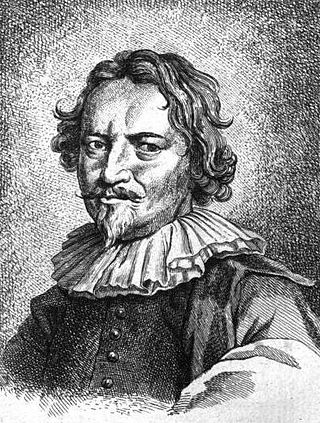
Carlo Fontana (1634/1638–1714) was an Italian architect originating from today's Canton Ticino, who was in part responsible for the classicizing direction taken by Late Baroque Roman architecture.

Palazzo Braschi is a large Neoclassical palace in Rome, Italy and is located between the Piazza Navona, the Campo de' Fiori, the Corso Vittorio Emanuele II and the Piazza di Pasquino. It presently houses the Museo di Roma, the "Museum of Rome", covering the history of the city in the period from the Middle Ages through the nineteenth century.

The Chigi Palace is a palace and former noble residence in Rome which is the seat of the Council of Ministers and the official residence of the Prime Minister of Italy. Since 22 October 2022, the tenant of the Chigi Palace has been Prime Minister Giorgia Meloni, although she doesn't live in the building. It is located in the Piazza Colonna, next to Palazzo Montecitorio, seat of the Chamber of Deputies.
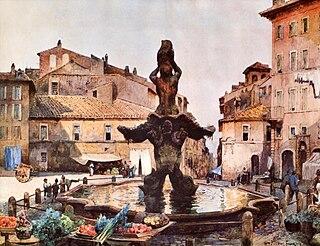
Piazza Barberini is a large piazza in the centro storico or city center of Rome, Italy and situated on the Quirinal Hill. It was created in the 16th century but many of the surrounding buildings have subsequently been rebuilt.

The Biblioteca Nazionale Vittorio Emanuele III is a national library of Italy. It occupies the eastern wing of the 18th-century Palazzo Reale in Naples, at 1 Piazza del Plebiscito, and has entrances from piazza Trieste e Trento. It is funded and organised by the Direzione Generale per i Beni Librari and the Ministero per i Beni e le Attività Culturali.
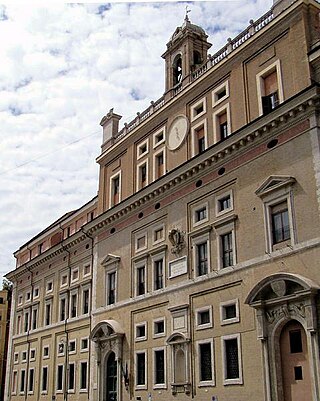
The Ministry of Culture is the ministry of the Government of Italy in charge of national museums and the monuments historiques. MiC's headquarters are located in the historic Collegio Romano Palace and the current Minister of Culture is Gennaro Sangiuliano.

The Palazzo di Propaganda Fide is a palace located in Rome, designed by Gian Lorenzo Bernini, then Francesco Borromini. Since 1626, it has housed the Congregation for the Evangelization of Peoples and since 1929 is an extraterritorial property of the Holy See. The complex includes a dormitory and chapel as well.

Palazzo Gherardi is a 15th-century building in the Santa croce quarter of Florence, Tuscany, in central Italy. Its main façade is on Via Ghibellina 88, while to the right it faces Via dei Pepi.

Palazzo Castiglioni is an Art Nouveau palace of Milan, northern Italy. It was designed by Giuseppe Sommaruga in the Liberty style and built between 1901 and 1903. The rusticated blocks of the basement imitate a natural rocky shape, while the rest of the decorations are inspired by 18th century stuccos. The building is now used as the seat of the Unione Commercianti di Milano.
The Ministry of the Interior is a government agency of Italy, headquartered in Rome. It is cabinet-level ministry of the Italian Republic. As of October 2022, Matteo Piantedosi, former Prefect of Rome, is the minister.

Piazza d'Aracoeli is a square of Rome (Italy), placed at the base of the Capitoline Hill, in the Rione X Campitelli.

Palazzo Giustiniani or the Piccolo Colle is a palace on the Via della Dogana Vecchia and Piazza della Rotonda, in Sant'Eustachio, Rome.

The Department for Civil Liberties and Immigration is a department of the Italian Ministry of Interior, with its headquarters in Rome, where the main Ministry of Interior offices are located, at the Palazzo del Viminale. The minister responsible is Luciana Lamorgese.

The Albertoni Spinola Palace, with entrances in Campitelli square n. 2, Capizucchi square and vicolo Capizucchi is located in the 10th District. It was projected and executed by Giacomo Della Porta and Girolamo Rainaldi around the end of 16th century and the first years of 17th century.

A Ministry of the Republic of Italy is an administrative organ of the Republic of Italy, placed at the top of Italian public administration and is characterised by one or more specific competencies, with an organised structure, often varying over time.
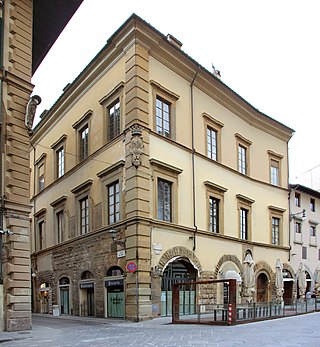
The Palazzo Naldini, or Naldini Del Riccio', or also Niccolini al Duomo, is a Florence palace located on the corner of Piazza del Duomo 28 rosso and Via dei Servi 2–4.
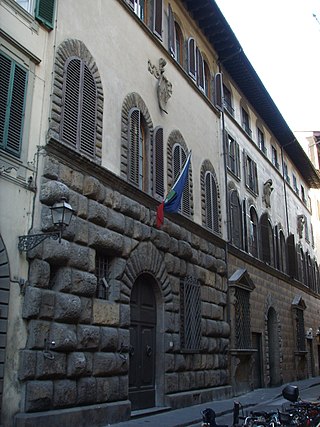
Palazzo Neroni is a historic building in the centre of Florence, located at via de' Ginori 7, with a rear entrance also at via della Stufa 4r-6r.



















